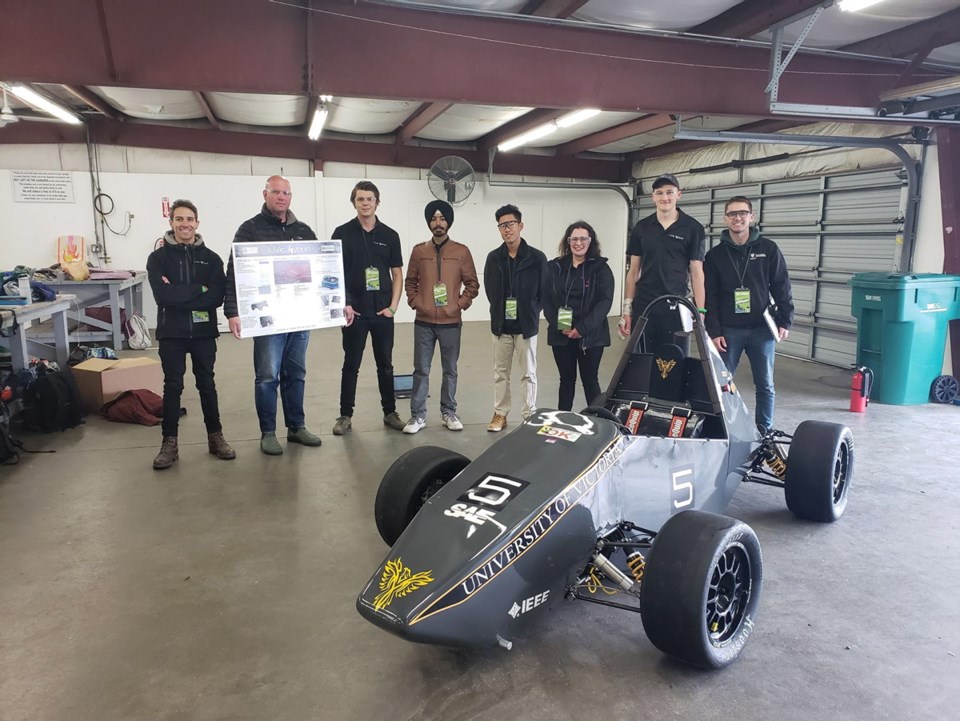Using a unique electricity-storage design, a team of University of Victoria students took the checkered flag last week, winning a U.S. contest to design, build and race a hybrid-powered formula race car.
The team of nine students from UVic was declared the winner Thursday of the 13th annual Formula Hybrid Competition, hosted every year by the Thayer School of Engineering at Dartmouth College in New Hampshire.
The 35 teams designed, constructed and put their cars through a number of tests and timed trials before the winner was declared.
Chad McColm, a fourth-year mechanical engineering student and one of the leaders of the UVic team, said the Victoria car stored its electrical energy using capacitors, while other entries all used lithium-ion batteries. Mechanical energy for the hybrid system was supplied by a 250cc motorcycle engine.
McColm said the big advantage for UVic was the lighter weight of the capacitor-based system compared with lithium-ion batteries. Basically, the UVic car put out more power per unit of mass than its competitors.
“We didn’t need to be as heavy to get as much power output,” he said Friday in telephone interview from somewhere in Connecticut, inside the truck hauling the UVic car back to Victoria. Team members and car are expected to home by Thursday.
This was the fifth time UVic has entered a team. It is also the second time UVic has won. It took first in 2016.
Doug Fraser, Dartmouth College research engineer and one of the founders of the Formula Hybrid Competition, said the race originated with a bit of a falling out between automobile designers.
Previously, a group called the Society of Automotive Engineers staged an annual contest for students to build an open-wheel race car based on a motorcycle engine. The cars would be judged on several categories, including fuel efficiency, safety and noise.
Fraser said Dartmouth tried to enter a hybrid car. But the SAE decided the hybrid system offered too much advantage and disqualified all hybrids.
So Dartmouth simply started its own competition for hybrids only.
Fraser said since then, Dartmouth has continued with the hybrid qualification because it offers the best variety of engineering challenges for students. Mechanical engineers must co-operate with electrical engineers to come up with a design.
“We don’t have the hybrid car vehicles because we think the design will be the answer to tomorrow’s transportation problems,” he said. “But as an engineering challenge for students, it works really well.”
McColm said being in New Hampshire offered him and his team great chances to meet and take advice from other faculty and share stories with other teams. The also got to hear from professional automotive engineers — this year from Chevrolet — who judged the cars and helped decide the winner.
He also believes the UVic entry was put together with an attention to detail many of the other competitors failed to match.
One thing, however, the UVic team left off its vehicle was its own name.
“We never gave the car a fun name,” McColm said.
“We just called it UVH 19.”



